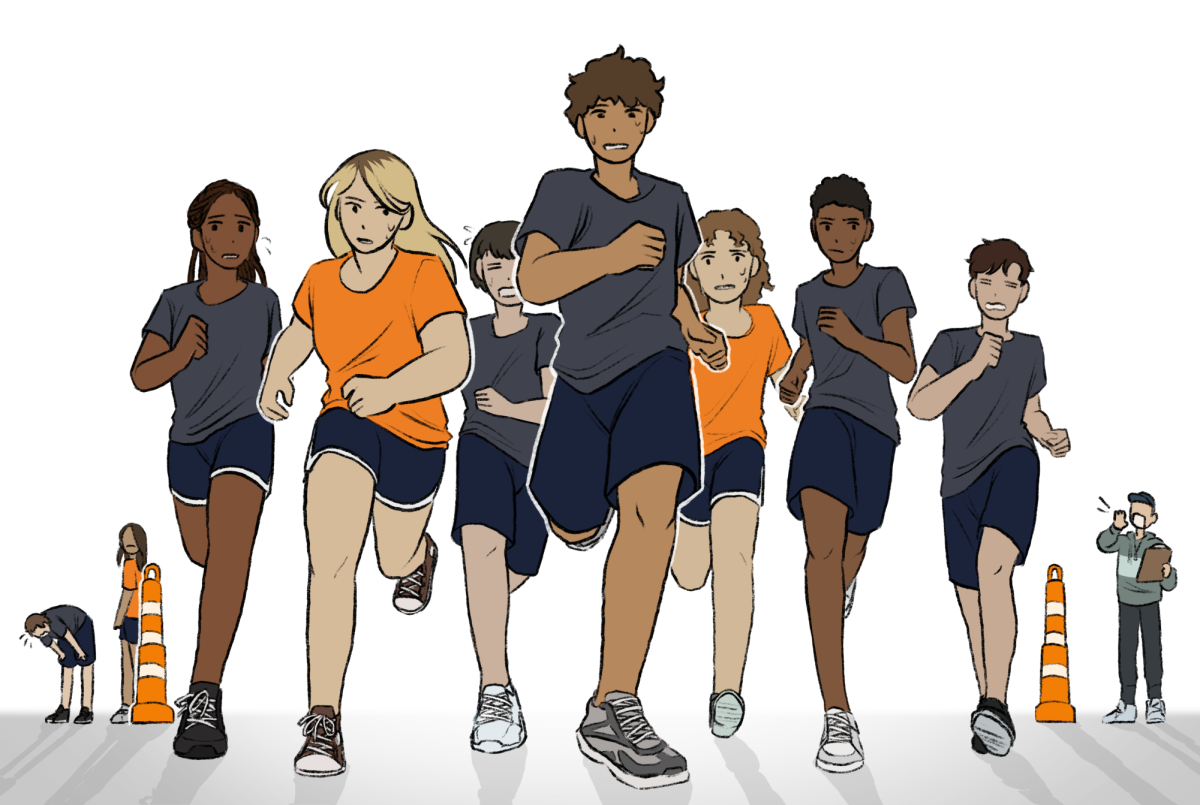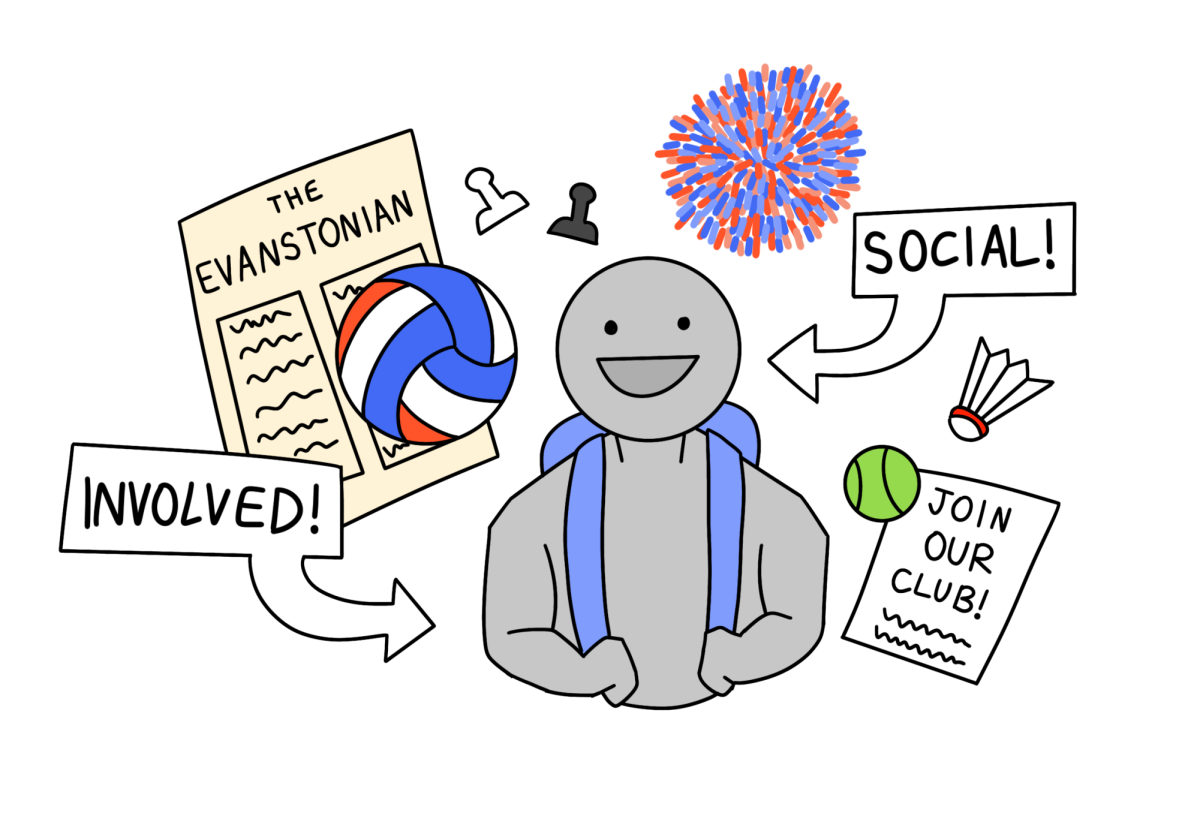It’s that time of year again, everyone. Once ETHS physical education teachers are finished distributing new uniforms, reviewing the syllabus with their pupils, and sponsoring get-to-know-you activities, it’s time for the infamous Fitnessgram Pacer Test, accompanied by its equally fruitless siblings: the Fitnessgram Push-Up, Curl-Up and Sit N’ Reach tests.
It seems that the tests are a staple of the American high school experience. Many, perhaps even most, students don’t think twice about their obligatory participation in the assessments, but after this semester’s biannual wave of mildly humiliating testing, I’ve had enough.
Take the Push-Up test. Groups of five students are called up to the front of the gymnasium to perform the test in full view of their classmates. You’re in the third group and the anxiety mounts as the other two groups finish their tests and join the audience. Finally, it’s your turn. You move onto the stage and get into position, feeling the eyes of your classmates on your back like spotlights. After what feels like an eternity in that uncomfortable, awkward position, the prerecorded listening track begins to play. You’ve heard it dozens of times, and it seems to amplify the feeling of butterflies fluttering around in your stomach.
Your P.E. teacher and your senior leaders march around, barking corrections to everyone’s form. Your arms are getting tired, but you don’t want to be the first person out. Finally, from the corner of your eye, you see a classmate collapse to the ground, panting as if they’ve just run the mile.
‘Thank goodness that’s over,’ you think to yourself as you return to your seat.
The Pacer Test is not much better. Held in the Fieldhouse, you run alongside dozens of your peers from various other PE classes. The jaunty music does nothing to soothe your nerves as you run up and down, the monotony proving more fatiguing than the movement. Once you eventually fizzle out, lungs burning, mouth begging for water, you collapse onto one of the bleachers, exhausted.
Perhaps I would be less antagonistic towards the Fitnessgram tests if I were confident that the results were being put to good use. However, I am afraid that I am lacking this confidence. Upon ‘sitting’ the tests in autumn, the results disappear for months, only to resurface in the spring, where students are reminded of their scores and merely encouraged to do better. However, the Fitnessgram tests don’t serve as a very good motivator for most students, with many students forgetting about their scores during the six-month intermission between tests. This means that the humiliation and anxiety that the Fitnessgram tests cause for many ETHS students are in vain.
The Fitnessgram tests are just necessary evils that ETHS students and faculty acquiesce to. This would be fine in and of itself, I suppose – there are plenty of things at ETHS that exist simply because they do – however, when the tests adversely impact students’ mental health, when they add yet another thing to students’ crowded agendas in a subject that should function as a break from sitting all day long, then why must it exist?
ETHS implemented the phone policy on premises that it would “support mental health,” yet the Fitnessgram test is one of many antiquated practices that actually worsens mental health. Why is it that the mental health argument is only ever used when it is convenient for the school and what it wants to accomplish? The hypocrisy does not go unnoticed on my behalf.
I would be remiss not to mention the elephant on the page; it is not up to ETHS to decide whether or not they administer the tests. This power is held by the Illinois Board of Education, so it is somewhat unfair to solely place the blame on ETHS for the nuisances that are the Fitnessgram tests.
With that being said, ETHS is not an island in the middle of the sea; that is, the problems we face here are surely felt elsewhere. Moreover, I do believe that ETHS could do more to make the Fitnessgram tests less futile. For example, incorporating the tests into the physical education curriculum more than the annual PE Awards Ceremony may help make the tests feel less like an unproductive obligation. In addition, allowing students to do other activities while their peers are testing may help to relieve some of the stress that students feel while testing.
At the end of the day, the Fitnessgram tests are only a small sliver of our high school experiences. Do a few instances of discomfort really demand such a drastic change? Well, personally, I believe that we must adopt an attitude in which the best policies for students and staff are always implemented, even in regard to something as seemingly trivial as the Fitnessgram Pacer Test.






Henry Hunt • Oct 2, 2024 at 3:27 pm
bro its not that bad its always been a part of the high school experience, chill. not to mention it’s a fun way for some people to test themselves or track personal progress.